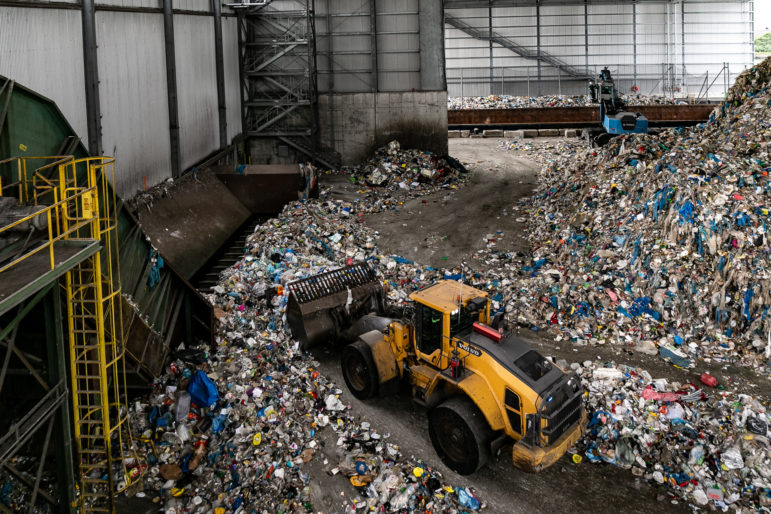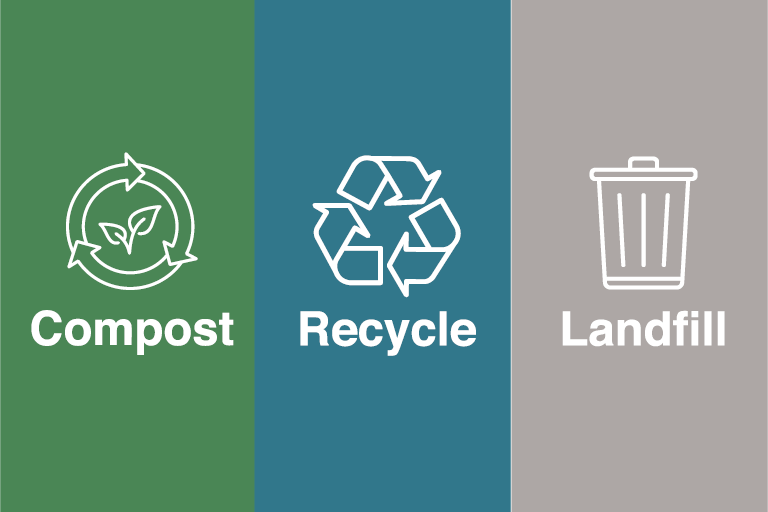The Function of Recycling Lives Services in Supporting Regional Neighborhoods
The Function of Recycling Lives Services in Supporting Regional Neighborhoods
Blog Article
Recognizing the Classification and Handling of Numerous Kinds of Waste
Efficient waste monitoring is crucial for environmental sustainability, requiring a thorough understanding of the category and handling of various waste types. Home waste, commercial by-products, dangerous products, digital refuse, and natural residues each necessitate distinct protocols to make sure security and decrease eco-friendly damages. Implementing appropriate segregation, treatment, and disposal methods is vital to mitigate unfavorable environmental effects and promote resource conservation. The composting of natural waste contrasts sharply with the detailed treatments required to handle harmful compounds. This complex strategy to squander administration highlights its complexity and the vital demand for specialized expertise in this domain name.

Home Waste
House waste, including a broad selection of discarded products generated from everyday living tasks, represents a considerable part of the overall waste stream - recycling lives services. This classification consists of organic waste such as food scraps, lawn trimmings, and paper products, together with not natural products like plastics, steels, and glass. The varied nature of house waste necessitates reliable category and administration to minimize ecological impact and promote lasting living techniques
Effective household waste monitoring starts with segregation at the resource, assisting in recycling, composting, and safe disposal. Organic waste, as an example, can be composted to create nutrient-rich dirt changes, minimizing landfill worry and improving dirt health and wellness. Recyclable materials, including paper, glass, and certain plastics, can be refined and repurposed, conserving sources and decreasing power usage associated with brand-new material production.
Moreover, unsafe home waste such as batteries, digital devices, and cleansing chemicals requires specialized managing to avoid dirt and water contamination. Public awareness projects and convenient disposal choices play important functions in making sure proper disposal and recycling of these products. By applying robust waste decrease methods and cultivating area engagement, municipalities can substantially reduce the ecological footprint of family waste.
Hazardous Waste
Industrial waste, a major factor to international waste generation, encompasses a varied variety of materials created by production, construction, and other industrial tasks. This group consists of by-products such as scrap metal, plastics, rubber, chemicals, and other residues. The structure and quantity of hazardous waste can differ significantly depending on the market and manufacturing procedures included. Reliable monitoring of hazardous waste is essential for reducing environmental effect and promoting sustainable methods.
The handling of commercial waste usually entails several procedures: collection, treatment, disposal, and partition. Collection systems are made to successfully collect waste materials from different sources within a commercial procedure.
Adopting strategies such as waste reduction, resource recuperation, and recycling can dramatically lower the concern of commercial waste on the environment, adding to even more sustainable industrial practices.
Hazardous Waste

The classification of dangerous waste is normally based upon its physical and chemical features. Harmful wastes contain dangerous materials that can trigger negative wellness results also at reduced focus. Corrosive wastes can damage or ruin living products and tissues. Combustible wastes can easily ignite, presenting fire hazards, while responsive wastes can trigger explosions or release harmful gases upon call with various other materials.
Effective contaminated materials management includes several vital methods: recognition and segregation of hazardous products, risk-free transport and storage space, and suitable treatment and disposal. Therapy approaches might include chemical incineration, neutralization, and stablizing. Regulatory compliance is essential, led by structures such as the Source Conservation and Recovery Act (RCRA) in the United States, which guarantees safe and environmentally sound monitoring of contaminated materials.
Electronic Waste
Electronic waste, usually abbreviated as e-waste, represents a growing obstacle in waste monitoring because of the quick obsolescence of technology. This group includes a wide variety of disposed of digital devices, including smartphones, computers, tvs, and house devices. The intricacy of e-waste depends on its composition; these items consist of a combination of useful products such as gold and copper, as well as unsafe substances like cadmium, mercury, and lead.

Regulations and policies, such as the European Union's Waste Electronic and electrical Tools (WEEE) Instruction, goal to promote accountable e-waste management. These policies mandate makers to assist in the collection and recycling of electronic products, thus minimizing the burden on land fills and minimizing environmental contamination.
Organic Waste
Organic waste, incorporating naturally degradable materials such as food scraps, yard trimmings, and farming deposits, makes up a significant section of the local strong waste stream. This kind of waste is notable not only for its quantity yet also for its prospective environmental More Help impact if not managed correctly. Organic waste can decay anaerobically in garbage dumps, creating methane, a potent greenhouse gas adding to climate modification.
Proper handling of natural waste involves numerous methods. Composting is an extensively adopted approach, transforming organic products right into valuable garden compost that can enhance soil best site and assistance sustainable farming. This procedure likewise lowers the quantity of waste sent to garbage dumps. An additional technique is anaerobic food digestion, which breaks down raw material in the absence of oxygen, producing biogas that can be used as a renewable energy source. Furthermore, diverting food waste from garbage dumps through donation programs can minimize food insecurity while reducing waste.
Municipalities and businesses are progressively identifying the importance of natural waste monitoring. Carrying out thorough natural waste reusing programs not only mitigates ecological impacts however additionally aligns with more comprehensive sustainability objectives, advertising a circular economy where resources are continually reused and repurposed.
Conclusion
Reliable waste monitoring and ecological security necessitate a thorough understanding of the classification and handling of various waste kinds. Household, commercial, harmful, digital, and natural waste each require unique treatments for disposal, treatment, and partition. Correct monitoring reduces environmental impact, saves resources, and promotes sustainability. Carrying out proper methods for each waste type ensures secure and responsible waste monitoring methods, ultimately adding to the defense of ecological communities and public health.
Effective waste management is pivotal for environmental sustainability, needing a detailed understanding of the category and handling of various waste kinds.Home waste, encompassing a broad array of thrown out products created from everyday living tasks, stands for a significant component of the general waste stream.Industrial waste, a Clicking Here major contributor to global waste generation, incorporates a diverse array of products created by manufacturing, building and construction, and other industrial tasks (recycling lives services).Unsafe waste, an essential concern in waste management, consists of products that present significant threats to human health and wellness and the atmosphere due to their toxic, destructive, combustible, or responsive residential properties.Organic waste, encompassing eco-friendly materials such as food scraps, backyard trimmings, and farming deposits, makes up a significant section of the municipal solid waste stream
Report this page